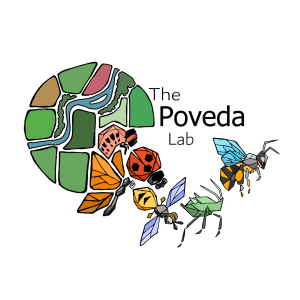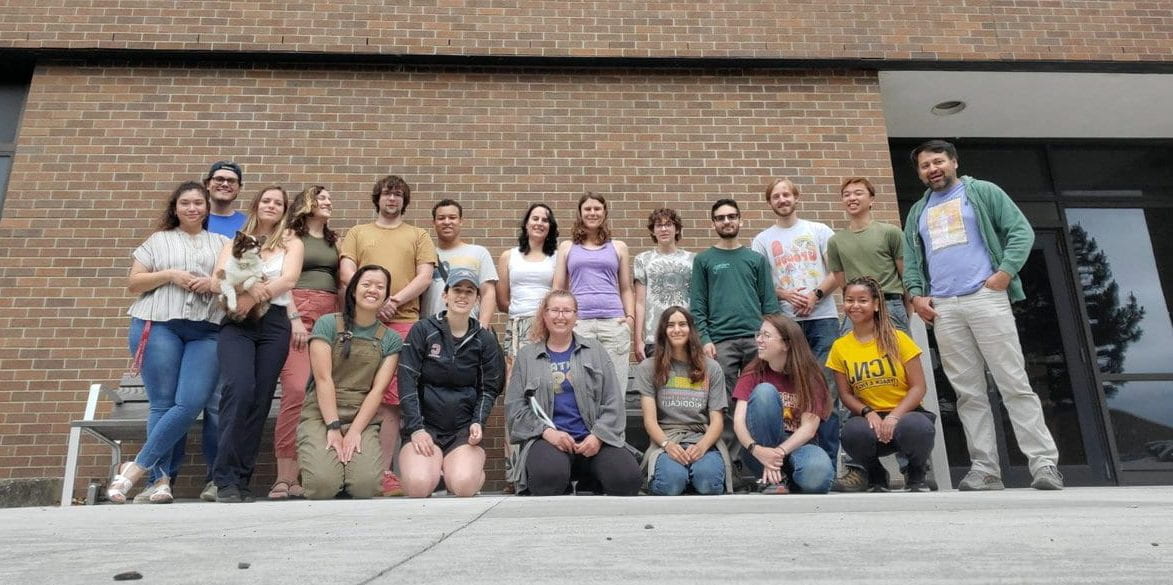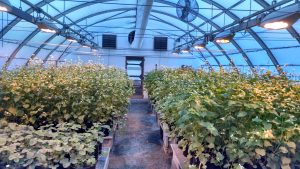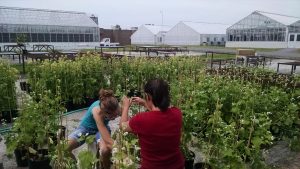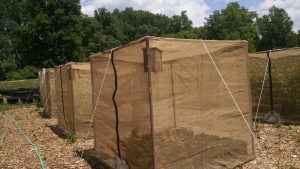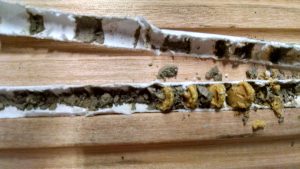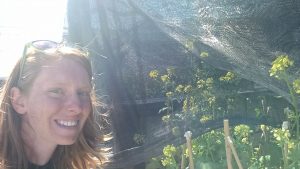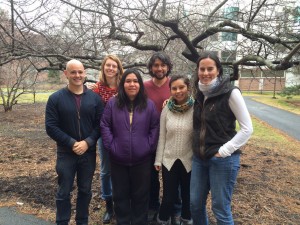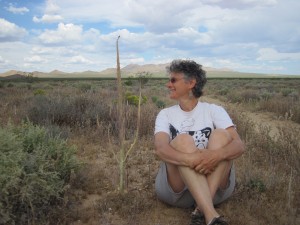We’re so proud of our summer REU students, congrats to Nathan and Josh for the excellent work they did this summer!
The Seedcorn Maggot projects are full steam ahead!
We have one of the largest field teams we’ve ever had in the lab this summer, and everyone is pulling together to gather data from multiple experiments all running at once! Much of the lab is focused on our work with the Seedcorn Maggot, and our senior grad student Hayley is finishing up her final field season! Great work everyone!!
Jason Tylianakis visit
We’re excited to have Dr. Jason Tylianakis from the University of Canterbury visiting us this week! His seminar gave an overview of his research interests on the structure of interaction networks, such as food webs, and how this structure affects ecosystem functions, like pest control and pollination. He is passionate about science, scientific writing, and helping biologists to use math and modeling in their research.
2014 Field Season
This has been a very busy season for all members of the lab. We started four new exciting projects this summer and started understanding all those new great systems we are working on.
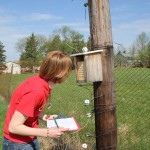 Mary kicked off the season in May looking at how diversity at the landscape scale influences mason bee (Osmia corniforns and Osmia lignaria) fitness. She is interested in investigating how pesticides present in the environment affect the bee’s fitness and is monitoring for this reason the pesticide content in the pollen and the size and number of bees that develop in nests next to 15 apple orchards in the Fingerlakes Region.
Mary kicked off the season in May looking at how diversity at the landscape scale influences mason bee (Osmia corniforns and Osmia lignaria) fitness. She is interested in investigating how pesticides present in the environment affect the bee’s fitness and is monitoring for this reason the pesticide content in the pollen and the size and number of bees that develop in nests next to 15 apple orchards in the Fingerlakes Region.
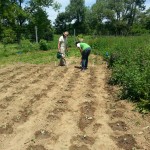 Ricardo is investigating how landscape scale diversity affects the biological control of cabbage lepidopteran pests. He is looking at the control provided by natural enemies present in the environment and complementing this natural experiment with a manipulative experiment where he releases Spined Soldier Bugs (Podisus maculiventris) in cabbage fields in 12 farms to see how the natural diversity of biological controllers interacts with the augmented bug in providing ecosystem services such as biological control and yield.
Ricardo is investigating how landscape scale diversity affects the biological control of cabbage lepidopteran pests. He is looking at the control provided by natural enemies present in the environment and complementing this natural experiment with a manipulative experiment where he releases Spined Soldier Bugs (Podisus maculiventris) in cabbage fields in 12 farms to see how the natural diversity of biological controllers interacts with the augmented bug in providing ecosystem services such as biological control and yield.
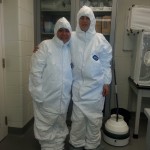 Etzel has been investigating the overcompensatory response of a Colombian potato variety in response to tuber moth damage. Since both the plant and the insect are from Colombia all her experiments are in the quarantine facility (see outfit). Her research aims at understanding the physiological mechanisms that allow the potato plants to overcompensate. In this project she is collaborating with Pavan Kumar in Georg Jander’s lab (BTI) who is investigating the genetic mechanisms of overcompensation. In addition Etzel is studying the resistance and tolerance responses of 14 different potato varieties to CPB with the aim to create a push-pull systems that can reduce damage and maintain yield through a deep knowledge of the plant’s natural responses to herbivore damage.
Etzel has been investigating the overcompensatory response of a Colombian potato variety in response to tuber moth damage. Since both the plant and the insect are from Colombia all her experiments are in the quarantine facility (see outfit). Her research aims at understanding the physiological mechanisms that allow the potato plants to overcompensate. In this project she is collaborating with Pavan Kumar in Georg Jander’s lab (BTI) who is investigating the genetic mechanisms of overcompensation. In addition Etzel is studying the resistance and tolerance responses of 14 different potato varieties to CPB with the aim to create a push-pull systems that can reduce damage and maintain yield through a deep knowledge of the plant’s natural responses to herbivore damage.
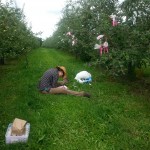 Susan was the last to start her project investigating fruit constitutive and induced resistance in different wild and domesticated apple species and varieties. Her primary goal is to understand the chemical cues that mediate resistance in fruits and to research the potential tradeoffs between apple size, and apple constitutive and induced resistance. She also aims at understanding if and how domestication has influenced those potential tradeoffs.
Susan was the last to start her project investigating fruit constitutive and induced resistance in different wild and domesticated apple species and varieties. Her primary goal is to understand the chemical cues that mediate resistance in fruits and to research the potential tradeoffs between apple size, and apple constitutive and induced resistance. She also aims at understanding if and how domestication has influenced those potential tradeoffs.
Welcome to all the new members in the lab
2014 has been a busy year in the lab where new members are enriching the type of research we do and broadening the questions we are asking and the systems we are studying.In January Sara Cilles joined the lab as our technician. She is helping us out with a multi-variety experiment in potatoes where we are investigating tradeoffs between plant defense responses (such as tolerance and resistance) to Colorado Potato Beetle damage and yield. In February Susan Whitehead joined the lab and she will be studying apple fruit resistance to the codling moth (and important fruit herbivore) and investigating the mechanisms that influence resistance. In March Etzel Garrido joined the lab and she will be understanding the mechanisms behind the over-compensatory growth of a Colombian potato variety in response to tuber moth damage.
2013 Lab Therapy
At the beginning of this month we had our professional development weekend (also known as Lab therapy) with the Thaler and the Agrawal lab. We all came back therapized and refreshed!
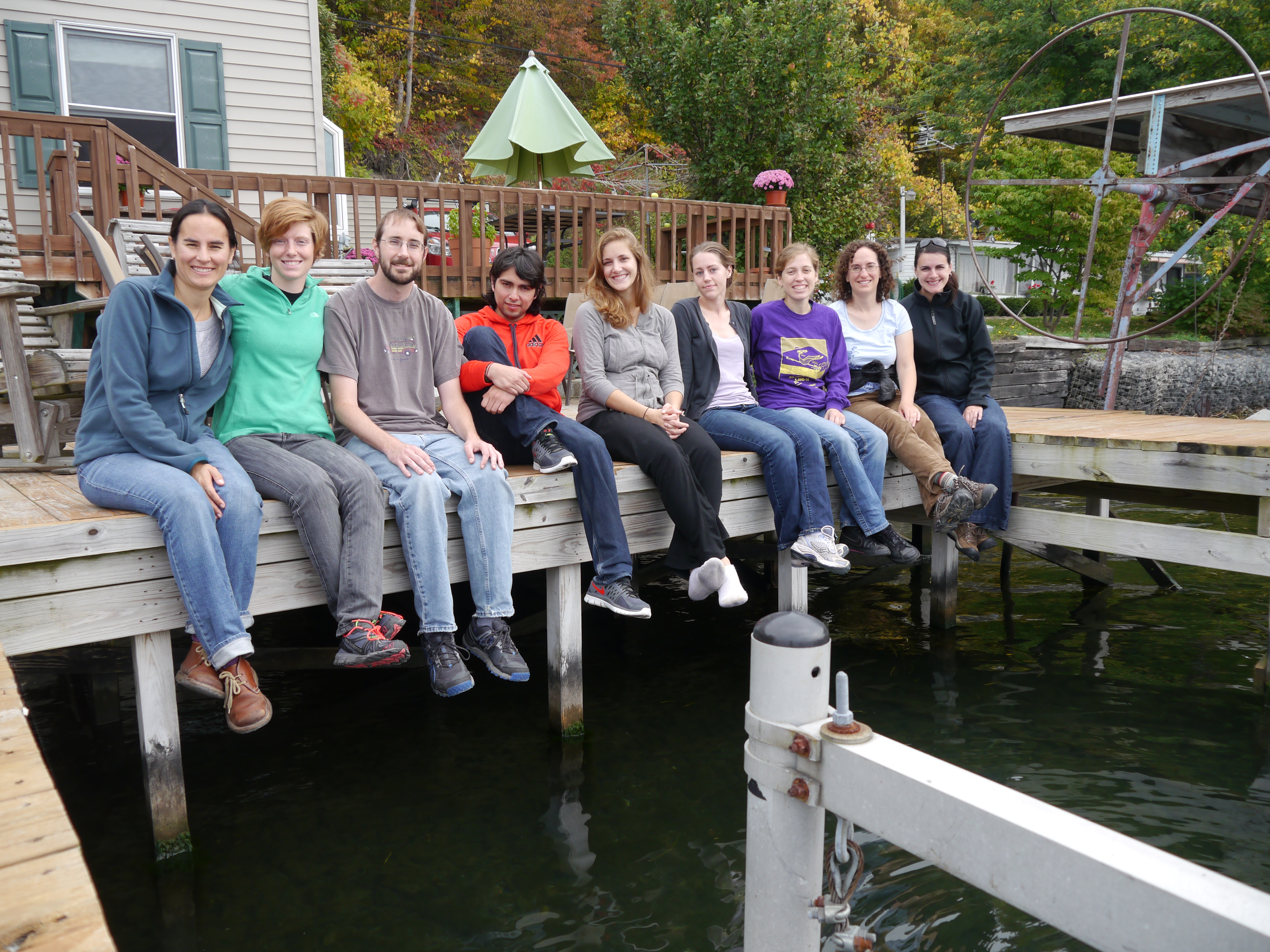
Mary Centrella joined the lab!
Mary Centrella joins our lab coming from the University of Wyoming. She is interested in the effects of competition, pesticides and landscape diversity on bees and will be jointly advised by Brian Danforth and me!
Welcome Mary!
More funding!
We just received funding for our project: “Increasing potato yield through genetic and biochemical analysis of compensatory growth responses during tuber moth infestation” from the USDA!
